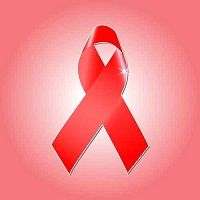Article
HIV Causes More Bone Loss in Teen Boys than Girls
Author(s):
Adolescent boys with HIV suffer greater bone loss than their female counterparts, possibly because estrogen is protective against two of the factors contributing to bone loss, a study in California found.

Adolescent boys with HIV suffer greater bone loss than their female counterparts, possibly because estrogen is protective against two of the factors contributing to bone loss, according to a new study by researchers at the Children’s Hospital Los Angeles, Los Angeles, CA.
.
They suggested that estrogen is protective against not only the inflammation that goes with chronic HIV, but also macrophage function.
The cells responsible for bone resorption are derived from the macrophage-monocyte system, the study explained. The researchers found that the adolescent HIV-infected males had higher levels of the marker sCD15, which is an indication of macrophage activation. Consequently, the authors proposed that “The association between lower bone mass and high sCD14 levels in HIV-infected males suggests that chronic macrophage activation may, in part, account for the differential in bone loss.”
Understanding the mechanisms behind bone loss in HIV-infected adolescents is important because it is the period where bone mass peaks, the study explained. Also bone loss has been one of the greatest problems related to HIV infection, the study explained. “In HIV-infected adults combined rates of osteopenia and osteoporosis are as high as 90 percent in men and 60 percent in women, and osteoporosis-associated fractures are 60 percent higher than the general population,” the study said.
The hypothesis generating study looked at the levels of 11 biomarkers in male and female adolescents with HIV to try to determine what caused the different degree of bone loss. They checked 457 plasma samples from behaviorally infected youths aged 14 to25 from 18 sites in the U.S. and Puerto Rico.
The hypothesis generating study acknowledged limitations in terms of potential other influences on its findings. Bone mass, it explained, is associated with a higher Body Mass Index (BMI) and the sample’s HIV-infected males had a lower BMI than the HIV females or non-infected males. The results also could have be confounded by differences in the length of time since diagnosis for males and females and were done fairly early in the infection process.
Nonetheless, the researchers concluded that macrophage activation may be a factor in bone loss for those infected with HIV.
“We hope that interventions to decrease macrophage activation early in HIV infection will decrease associated bone loss, which has become a major adverse side effect of HIV infection and its treatment,” said Grace Aldrovandi MD, the lead author and chief of the department of infectious diseases at the children’s hospital.





